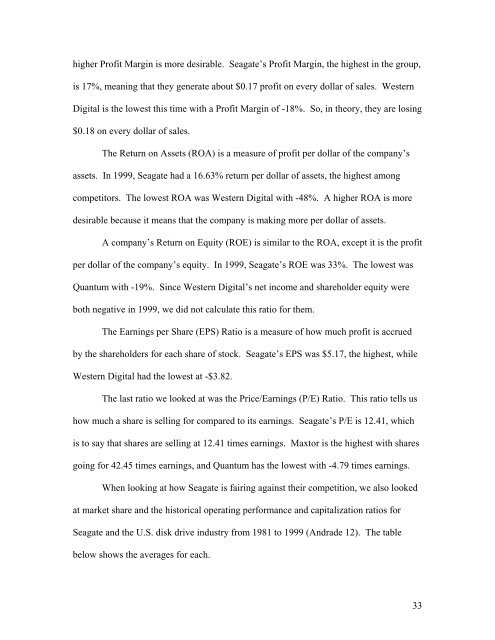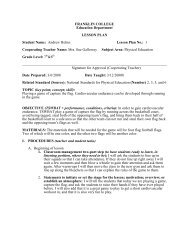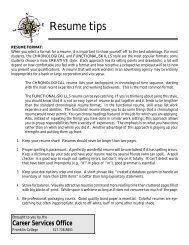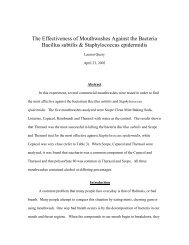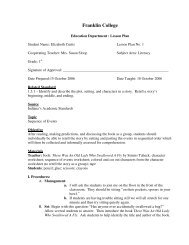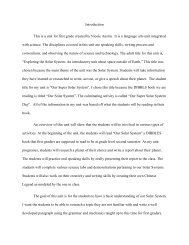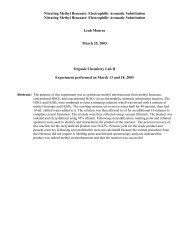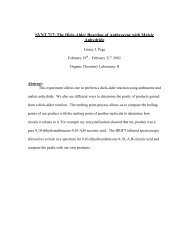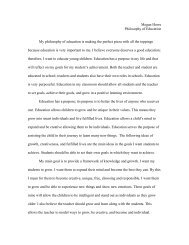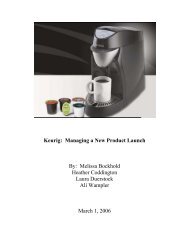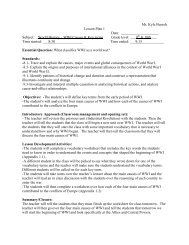Melissa Bockhold Heather Coddington - Franklin College
Melissa Bockhold Heather Coddington - Franklin College
Melissa Bockhold Heather Coddington - Franklin College
You also want an ePaper? Increase the reach of your titles
YUMPU automatically turns print PDFs into web optimized ePapers that Google loves.
higher Profit Margin is more desirable. Seagate’s Profit Margin, the highest in the group,<br />
is 17%, meaning that they generate about $0.17 profit on every dollar of sales. Western<br />
Digital is the lowest this time with a Profit Margin of -18%. So, in theory, they are losing<br />
$0.18 on every dollar of sales.<br />
The Return on Assets (ROA) is a measure of profit per dollar of the company’s<br />
assets. In 1999, Seagate had a 16.63% return per dollar of assets, the highest among<br />
competitors. The lowest ROA was Western Digital with -48%. A higher ROA is more<br />
desirable because it means that the company is making more per dollar of assets.<br />
A company’s Return on Equity (ROE) is similar to the ROA, except it is the profit<br />
per dollar of the company’s equity. In 1999, Seagate’s ROE was 33%. The lowest was<br />
Quantum with -19%. Since Western Digital’s net income and shareholder equity were<br />
both negative in 1999, we did not calculate this ratio for them.<br />
The Earnings per Share (EPS) Ratio is a measure of how much profit is accrued<br />
by the shareholders for each share of stock. Seagate’s EPS was $5.17, the highest, while<br />
Western Digital had the lowest at -$3.82.<br />
The last ratio we looked at was the Price/Earnings (P/E) Ratio. This ratio tells us<br />
how much a share is selling for compared to its earnings. Seagate’s P/E is 12.41, which<br />
is to say that shares are selling at 12.41 times earnings. Maxtor is the highest with shares<br />
going for 42.45 times earnings, and Quantum has the lowest with -4.79 times earnings.<br />
When looking at how Seagate is fairing against their competition, we also looked<br />
at market share and the historical operating performance and capitalization ratios for<br />
Seagate and the U.S. disk drive industry from 1981 to 1999 (Andrade 12). The table<br />
below shows the averages for each.<br />
33


